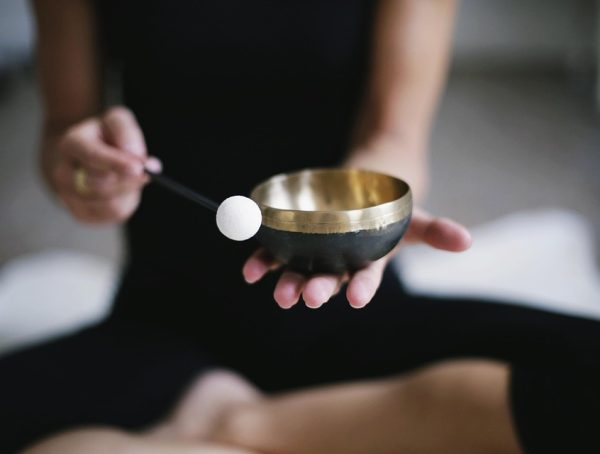How to Choose the Best Type of Meditation for Your Lifestyle
In today’s fast-paced world, the quest for inner peace and awareness has led to a growing interest in meditation. With numerous techniques available—from mindfulness to transcendental meditation—choosing the right practice for your unique lifestyle can feel overwhelming. The good news is that meditation is not a one-size-fits-all undertaking. By aligning your meditation practice with your lifestyle, you can reap the benefits more effectively and sustainably.
Understanding Your Lifestyle
Before delving into specific types of meditation, it’s crucial to consider your own lifestyle. Ask yourself the following questions:
-
What is my daily schedule like?
If you have a packed schedule, a longer meditation might feel unrealistic. On the other hand, if you have more flexibility, you might be able to dedicate more time.
-
What annoys or stresses me?
Identifying your stressors can help you choose a meditation that directly addresses them.
-
What is my comfort level with silence and stillness?
Some people find peace in silence, while others may struggle with it. Consider whether you prefer guided meditations or more independent practices.
- What are my goals?
Are you seeking stress relief, greater focus, emotional balance, or spiritual connection? Knowing your objectives can narrow your options considerably.
Types of Meditation and Their Benefits
Understanding what each meditation type entails can provide clarity for your choice:
1. Mindfulness Meditation
Best for: Busy lifestyles; anyone who has difficulty sitting still.
Mindfulness involves focusing on the present moment without judgment. You typically practice this technique while sitting quietly or even while engaging in daily activities.
Action Steps:
- Start with five minutes a day of focusing on your breath.
- Gradually increase your practice time to 10-20 minutes.
- Experiment with incorporating mindfulness into routine activities, like eating or walking.
2. Guided Meditation
Best for: Beginners; those who prefer instructions.
Guided meditation involves listening to a teacher or an audio recording that leads you through a visualization or calming sequence.
Action Steps:
- Explore various apps or YouTube channels dedicated to guided meditations.
- Set a regular schedule, choosing specific times that work best for you (e.g., mornings, lunchtime).
- Pay attention to what types of guidance resonate with you—nature sounds, music, or a calming voice.
3. Transcendental Meditation (TM)
Best for: Individuals looking for a structured practice; those aiming for deep relaxation.
TM is a mantra-based technique that requires training from a certified instructor. The practice encourages deep rest and promotes emotional balance.
Action Steps:
- Research certified TM teachers in your area.
- Attend an introductory seminar to understand TM’s philosophy before committing.
- Schedule your daily practice for 20 minutes, twice a day.
4. Movement-Based Meditation (e.g., Yoga, Tai Chi)
Best for: Those who find stillness challenging; individuals who enjoy physical activities.
This type of meditation combines physical movement with mindfulness, making it accessible for those who prefer to be active.
Action Steps:
- Join a local yoga or Tai Chi class or find online sessions that fit your skill level.
- Incorporate a short, mindful stretch routine into your morning or evening.
- Explore the relationship between breath and movement to enhance your practice.
5. Loving-Kindness Meditation (Metta)
Best for: People seeking emotional healing and connection; those feeling isolated.
Loving-kindness meditation focuses on developing an attitude of love and kindness toward oneself and others.
Action Steps:
- Begin by repeating phrases of goodwill towards yourself (e.g., “May I be happy. May I be healthy.”).
- Gradually extend these wishes to loved ones, acquaintances, and eventually, those with whom you have conflicts.
- Consider dedicating a specific day each week to practice loving-kindness.
Making It Stick: Create a Routine
Once you’ve chosen a type of meditation that resonates with you, the next step is to establish a routine:
-
Set a Time: Designate a specific time of day for your practice. Morning sessions can begin your day with mindfulness, while evening sessions can help you wind down.
-
Create a Space: Designate a calm and peaceful spot in your home for meditation to foster a conducive environment.
-
Start Small: If a 20-minute practice seems daunting, begin with just 5 minutes per day and gradually increase your time.
-
Join a Community: Encourage accountability by joining a local meditation group or an online community. Sharing experiences and challenges can motivate you to continue.
- Track Your Progress: Keep a journal to note how you feel before and after each session. This can serve as a source of motivation and help you assess how different practices impact your mood and well-being.
Final Thoughts
Meditation is a journey, not a destination. What works for one person may not fit another, and that’s perfectly okay. Try different types of meditation, be patient with yourself, and don’t shy away from switching practices if you feel it’s no longer serving you. By integrating meditation into the fabric of your lifestyle, you can cultivate a deeper sense of tranquility and presence in your daily life.
"Take care of your body. It’s the only place you have to live." — Jim Rohn
If you found this article helpful, consider following Kevin on Instagram (@KSteineman) for more insights on well-being and mindfulness. Embrace your journey toward a more peaceful and fulfilling life!
You might also like
More from Meditation
The Role of Mantras in Transcendental Meditation: A Deep Dive
The Role of Mantras in Transcendental Meditation: A Deep Dive Transcendental Meditation (TM) has garnered a significant following across the globe, …
The Science Behind Meditation: Improving Mental Health Naturally
The Science Behind Meditation: Improving Mental Health Naturally In today's fast-paced world, the pursuit of mental wellness has become paramount. Thousands …
Understanding the 7 Types of Meditation for Beginners
Understanding the 7 Types of Meditation for Beginners: A Path to Inner Peace Meditation has become a popular practice in recent …


































